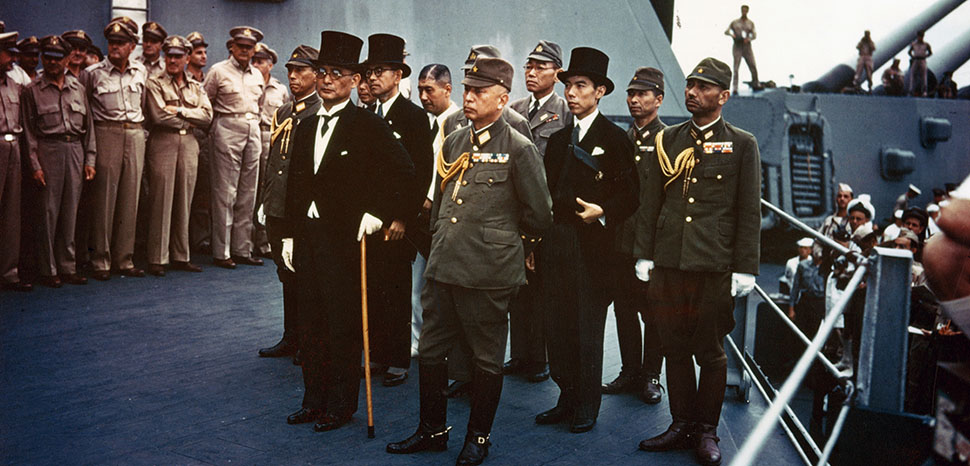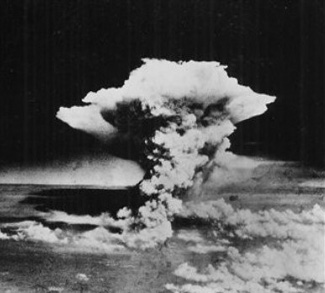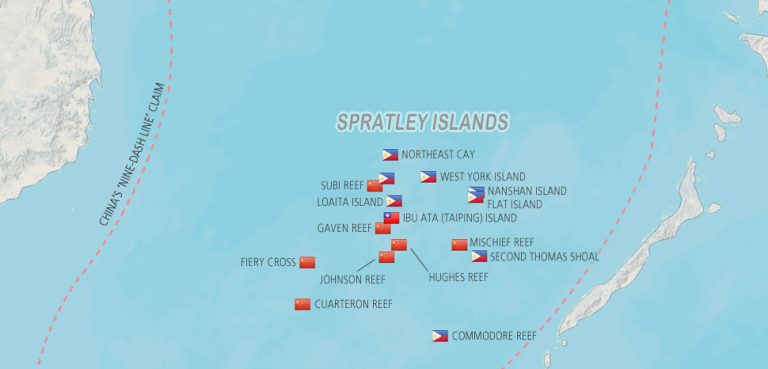In most specialized discussions about contemporary great power politics, Japan is often overlooked. This analytical neglect is understandable as a result of the discreet, secondary, and modest position that the Japanese assumed for decades after their crushing defeat in War World Two. However, appearances can be deceiving. In fact, a closer scrutiny reveals that the role that Japan might potentially play in the near future will not be inconsequential for the correlation of forces in the Pacific Basin and perhaps even beyond. Therefore, from a long-range perspective, the following sections examine the Japanese state’s geopolitical background, its historical trajectory and current situation in order to envisage why and how this East Asian nation can reassert itself as a heavyweight. Despite its prolonged “hibernation” and problematic phenomena like its sharp demographic decline, it seems thar Japan has not reached its twilight yet. Far from it.
Understanding Japan’s Background as a Great Power
As Professor Jared Diamond argues, the uniqueness of Japan is determined by its geography. Although the Japanese archipelago belongs to the Far East, it is substantially separated from the Asian mainland (South Korea, its closest neighbor, is located more than 1,000 kilometers away). This paradoxical sense of simultaneous closeness and remoteness is noticeable in several traits that have historically shaped the characteristic Asian-ness of Japanese society, including the exceptional profile of the Japanese language. Furthermore, Japan is located in the area peripheral to the Eurasian landmass referred to as the rimland in the theoretical geopolitical thinking of Nicholas Spykman. Therefore, such position means that Japanese national security is often threatened by the natural expansionism of continental powers such as China and Russia. In other words, Japan’s position is somewhat analogous to that of Britain in Europe. This maritime condition offers a direct and dynamic gateway to interact with the wider world in the fields of trade, diplomacy, and military matters. On the other hand, Japan’s terrain is very rugged, a reality that often influences the development of clannish, homogeneous and conservative societies that are wary of outsiders.
As a result of its fateful exposure to prosperous and powerful sea-faring Western empires that had reached the Orient, in the Meiji era, Japan decided to embark on the path of industrial development, economic modernization and technological progress. This course of action was also inspired by the ideas of both classical mercantilism and the economic nationalism of thinkers like Friedrich List, according to which the parallel pursuit of wealth, power and security is complementary. However, Japan did not embrace Western liberalism. The rising prosperity of the Japanese economy gave birth to an oligopolistic structure in which the Zaibatsu ‒ large business clans whose nerve centers were run by dynastic families, involved in multiple activities across several economic sectors through a constellation of subsidiaries and integrated with their own sources of funding and financial services ‒ were organically connected to the state. The profits made by these groups of companies were instrumental to increase the overall prosperity of Japanese society and, in turn, the state fostered their growth through contracts, access to new consumer markets for the manufactured goods they produced ‒ as well as to the supply of raw materials ‒ and the implementation of a foreign policy that favored their corporate interests. Likewise, the advanced capabilities of these firms were also useful to enhance the hardware of the Japanese military.
Unsurprisingly, the meteoric rise of Japanese power increased the ambition of the Japanese empire. In this context, Japanese statecraft abandoned the isolation that had lasted for centuries in order to assume an increasingly assertive and aggressive role in the geopolitics of the Pacific. Japanese forces conquered Korea, Taiwan and Manchuria. Moreover, emboldened by its victory over China and later Russia, the Japanese state adopted an expansionist grand strategy whose purpose was to establish a “Greater East Asia Co-Prosperity Sphere” under Tokyo’s hegemony. This imperial project contemplated the direct control of much of Southeast Asia ‒ including strategic pivotal positions such as Singapore, the Philippine Archipelago and the Strait of Malacca ‒ much of China’s coastline and territories held by the Soviet Union in the Far East, but it went even further because its subsequent steps (if the Axis powers managed to achieve victory) sought the subjugation of Australia, New Zealand, the Southern tip of the Indian subcontinent and even Alaska and the American West Coast as either satellites or vassals. Such quest for Lebensraum entailed the eviction of Western powers from Asia and the acquisition of natural resources (including oil, minerals, rubber, fertile soil suitable for growing cash crops) that were needed to sustain Japan’s status as a major force to be reckoned with on a global scale because of their applications in the production of machinery, logistical infrastructure, vehicles and weaponry. Once regarded as a Spanish lake, the Pacific basin would become a space under exclusive Japanese suzerainty. In this new Asian order, harmony would supposedly prevail thanks to the existence of shared common denominators in terms of cultural affinities.
This revisionist plan threatened to undermine the condition that the United States had reached as a Pacific heavyweight based on the naval strategies formulated by Admiral Alfred Thayer Mahan. In response to said challenge, the Americans decided to fight back and engage Japanese forces. This intervention, combined with the proliferation of local resistance that emerged as a natural reaction against the various atrocities committed by Japanese invaders stopped the completion of Tokyo’s grandiose imperial schemes. After a series of major battles, the fierce wave of Japanese expansionism was decisively repelled and then reversed. The Japanese kept fighting even after Germany surrendered, even though their position was pretty much hopeless by then. Shortly after the US dropped nuclear weapons on two Japanese cities, Tokyo finally capitulated. Washington resorted to such weapons of mass destruction because it wanted to avoid the costs of a ground invasion, prevent the partition of Japan and send a strong message to the Soviet Union as the configuration of a bipolar balance of power was already in the horizon.
Japan Reinvents Itself during the Cold War
When Japan was vanquished, a strong geopolitical confrontation was already emerging. In this rising strategic competition between the United States ‒ the world’s leading sea power ‒ and the Soviet Union ‒ the world’s top telluric power ‒ for global hegemony, both superpowers sought to gain footholds in pivotal regions. As a maritime power from the so-called “outer crescent,” the American leviathan pursued a policy of containment to keep in check the reach of Soviet power in Europe, an imperative that was accomplished through the establishment of NATO. However, from Washington’s perspective, a “cordon sanitaire” was also needed in the Far East, especially because the People’s Republic of China was repositioning itself as the Kremlin’s junior partner. Likewise, the Americans needed to prevent the potential expansion of Soviet naval power through the port of Vladivostok. These circumstances provided a window of opportunity for the Japanese state. Otherwise, its fate would have surely been quite different. Thus, the Japanese were offered a deal they could not reject. In exchange for access to the American consumer markets, the availability of credit for reconstruction and the reactivation of economic dynamism, the unrestricted ability to engage in international trade and ‒ above all ‒ the protection of Washington’s security guarantees, Tokyo had to accept the strategic, geopolitical and military tutelage of the Americans as a junior partner. The decision was a no-brainer. Thus, during much of the Cold War Japan operated as an anchor of American influence and as a potential spearhead against both the Soviet Union and China. Without Japan, the position of the US as an Asiatic power would have been compromised. Although tensions remained frozen in Europe, the eruption of military hostilities in both the Korean peninsula and Indochina vividly demonstrated that the Asia-Pacific region was an important front of the Cold War.
Although unsaid, an additional tacit purpose of Japan’s subordinate position as an American beachhead was to prevent the resurgence of Japanese military aggressiveness. Since its defense was essentially outsourced to the US ‒ a reality that was detrimental in terms of national sovereignty ‒ Tokyo had no choice but to curtail its ambitions and exercise restraint, even though Japan never fully eschewed its former dreams of imperial glory. In this context, the Japanese reinvented the nature of their national power. Following a policy inspired by the theoretical principles of “mercantile realism” (an intellectual prism that remodels the concepts of national security, Realpolitik, diplomacy and grand strategy in accordance with economic, industrial, commercial and financial criteria), Tokyo became a mercurial geoeconomic heavyweight.
Thus, the Japanese managed to revitalize the international competitiveness of their industrial companies, increase their market power in productive sectors whose outputs entail a high degree of added value, forge profitable trade partnerships and nurture the development of comparative advantages in the domain of advanced technologies. Keiretsu ‒ financially integrated and heavily interwoven business structures that represent the spiritual successors of the old zaibatsu ‒ such as Mitsubishi, Toyota, Toshiba and Nissan acted as the galleons that filled the coffers of the Japanese state. “Japan, Inc.” was no longer interested in invading foreign nations, but its corporate vectors could conquer overseas markets through expansion, commerce and investments. In this field, Japanese firms had the chance to engage and even outperform their American and European counterparts. The Japanese wanted to overtake the West in terms of economic and technological superiority. In summary, after abandoning its traditional warrior ethos, Japan had become a nation of merchant princelings, professional technocrats, engineers and salarymen.
Interestingly, even though the Japanese yen became an important reserve currency, Tokyo supported the dollar’s monetary hegemony. Thanks to its exports, Japan accumulated massive amounts of holdings denominated in greenbacks. Such decision was mostly motivated not only by economic considerations, but also based on strategic calculations. In this period, as Robert Gilpin and other scholars of political economy have highlighted, Japanese developmental capitalism was notorious for its managerial excellence, the proliferation of skillful technocracies, an emphasis on the collective harmony of Japanese society, export-led growth, a penchant for innovative R&D programs, a synergic collaboration between the private sector and governmental agencies, the cooperative implementation of industrial policies, informal networks of mutual trust in the higher echelons of corporate governance systems, the assertive use of market intelligence as a strategic tool and the outstanding quality of its manufactured goods. In a nutshell, the Japanese became masterful practitioners of economic statecraft.
Nevertheless, the balance of power changed as a result of the Soviet Union’s economic and technological stagnation, Moscow’s counterproductive military intervention in Afghanistan, the Saudi-American pact to bring down oil prices, boiling turmoil in the Warsaw Pact states of Eastern Europe, the reproachment between the US and the People’s Republic of China and the growing process of European integration. In the late Cold War, some American geopolitical forecasters anticipated that the US and Japan would eventually collide again in the coming decades. In turn, Japanese business and political elites started flirting with the idea of adopting closer ties to Asia and mitigating overreliance on the US, a course of action that would be convenient to strategically harness the regional presence of Japanese firms, generate mutually complementary economic partnerships and leverage Japanese cutting-edge advantages in a quest to attain regional leadership.
Finally, another distinctive trait of this era is an active effort to strengthen Japanese “soft power.” This pursuit responds to the need to minimize the shadow of militaristic aggression that still tarnishes Japan’s international reputation, increase business opportunities for Japanese firms in foreign consumer markets and bolster the international prestige, attractiveness and influence of the Japanese state. Hence, Japan has projected its cultural influence through representative elements of its traditional cuisine and beverages, martial arts, anime, classical and contemporary literature, poetry, films, music, videogames, ceremonial items, decorative handicrafts, mysticism and iconic characters of Japanese history (samurais, ninjas, geishas). Likewise, the sophistication of Japanese technology, the allure of Japanese luxury items as well as the entrepreneurial prowess and the world-class prominence of Japanese firms have also made Japan look cool.
The Samurai Returns?
In the post-Cold War era, Japan’s strategic environment has changed dramatically. The rise of China as a great power that harbors far-reaching geopolitical and geoeconomic ambitions, the emergence of India as a regional heavyweight, the increasingly complex strategic competition between Beijing and Washington, the efforts undertaken by the Middle Kingdom to upgrade its naval capabilities, the confrontation between Russia and the West over Ukraine and North Korea’s intermittent acts of nuclear sabre-rattling are all game changers that entail tectonic impacts for Tokyo. Likewise, the prospect of conflict over Taiwan, a potential Korean reunification and eventual geopolitical realignments in the Asia-Pacific region ‒ an area that is becoming a global center of gravity in terms of both high politics and economic dynamism ‒ would be problematic too. So far, it seems that Japan is firmly anchored to the orbit of the United States, particularly in the domain of security. Japan is classified by the Americans as a major non-NATO ally and the East Asian country hosts a significant American military presence, including air bases, naval facilities and arsenals. Tokyo has privileged access to the purchase of sophisticated American-made weapons, including fighter jets such as F-35s. Additionally, there are collaborative ties between Japan and the Five Eyes, a comprehensive intelligence-sharing alliance headed by the US that also includes the UK, Canada, Australia and New Zealand. Notably, Japan has also joined the so-called “Quad” (an alliance which also includes the US, Australia and India that intends to operate as an Asian equivalent of NATO) whose purpose is to contain the influence of China, an understandable move if one considers that Tokyo does not have what it takes to face the challenge of an increasingly powerful and assertive Middle Kingdom on its own.
Furthermore, Japan belongs to the G7, a group controlled by Atlanticist powers and Japanese elites have been co-opted through their participation in secretive networks of power brokers, strategic thinkers and business moguls such as the Trilateral Commission. On the other hand, Japan is seemingly preparing to challenge the Belt and Road Initiative, a Chinese project launched to create an axis of geoeconomic interconnectedness that would cover much of the Eurasian landmass through transnational infrastructure networks. Tokyo apparently seeks to take care of that through the development of alternative multilateral frameworks and interfaces ‒ which would involve logistical corridors, energy, digital telecom platforms, trade, rules and the flow of investments – with Washington and Brussels as a conduit to bypass and counterbalance the schemes designed by Beijing.
Nevertheless, there are subtle signs which suggest that Japan’s pro-Western strategic orientation must not be perpetually taken for granted. Siding with the US military against China in a direct clash would bring dangerous risks (i.e. heavy retaliation) for Tokyo and its political and material preparedness to deal with such outcome is unclear. Relying on the protection of the American nuclear umbrella for defensive purpose is one thing but joining a campaign of expeditionary warfare is an entirely different matter. Alternatively, the decline of US hegemony or a reluctance to engage due to the influence of isolationist political sentiments in DC would naturally force Japan to reassess its position in order to strengthen its independence and seek a favorable balance of power. Another paradox is that, even though Japan proactively joined the Western campaign of economic warfare against Russia through the imposition of sanctions, the East Asian nation is still an importer of Russian fossil fuels, including oil, natural gas and coal. Tellingly, the Japanese private firm JERA ‒ the country’s largest electricity generator ‒ has recently renewed contracts for the long-term delivery of Russian energy from the LNG plant located in Sakhalin-2, despite the atmosphere of mutual hostility between the Kremlin and the West and the fallout derived of the Ukraine War. How this ambivalence towards Moscow will be handled in a foreseeable future is unknown.
Some intriguing predictions that augur a Japanese strategic realignment have been formulated by geopolitical thinkers. For instance, General Karl Haushofer believed that, in the long run, the Japanese state would eventually join the bloc of pan-Eurasian powers against their Atlanticist counterparts, adding as a suggestive precedent that, as imperial states, both China and Japan had co-existed symbiotically for centuries, a reality that could be feasible once more in a multipolar world. Needless to say, this would require overcoming historical animosities and unsettled territorial disputes, as well as the shared willingness to foster collaborative ties as a way to promote some sort of accommodation, most likely through a geoeconomic arrangement. Interestingly, Indian thinker Parag Khanna holds that Japan will be gradually attracted by the economic, cultural, identitarian and civilisational gravitational pull of an emerging ‒ and pluralistic ‒ Asian world order as one of its pillars, not as a mere satellite. In turn, based on the assumption that the Middle Kingdom’s power will decline rather than continue its ascending trajectory, American analyst George Friedman goes even further. He contends that the national interests of Japan and the US will clash in both the Pacific Basin and outer space in the coming decades, a collision that might very well lead to an actual kinetic war. Although these predictions are heterogenous, they all agree that the march of history will convince Japan to become a key protagonist in what is to come in one way or another.
An important factor that needs to be kept in mind is that Japan’s national power has been underutilized. That might change if the Japanese state decides that it is time to assume a more assertive and independent role. After all, Japan has the world’s third largest GDP (according to Harvard’s Atlas of Economic Complexity, Japan is the most sophisticated economy in the entire world), its military-industrial complex manufactures state-of the-art weaponry (the ongoing development of the Mitsubishi F-X as a sixth-generation stealth fighter is an impressive reminder of that), it has a blue water navy with regional power projection capabilities and ‒ thanks to a pool of formidable scientific cadres ‒ is well positioned to harness the strategic, military and commercial benefits of the “Fourth Industrial Revolution,” Likewise, Japan has the technical expertise that would be needed to develop its own nuclear weapons program. In an uncertain world in which the weaponization of complex interdependence, financial volatility and the incidence of systemic economic disruptions have become commonplace, the autonomous preservation of reliable access to international consumer markets and the supply of natural resources is a vital priority for Japanese national security. Its satisfaction cannot be placed purely in the hands of foreigners.
Flowery rhetoric aside, Japan does not truly share the abstract principles associated with the so-called Western model of liberal world order or the cosmopolitan worldview held by the so-called “open societies.” Instead, the fact that Tokyo has been clever and pragmatic enough to instrumentally harvest the concrete benefits provided by “Pax Americana” ‒ such as the US nuclear umbrella and the availability of open waterways in the Indo-Pacific ‒ projects that illusion. Actually, certain factions within the Japanese political class are staunchly convinced that reviving the Japanese imperial tradition is the wisest course of action so that this country can play an assertive role within the international system. The late Shinzo Abe was a political representative of this view. The hawkish ideology that encouraged Japan to walk the path of war in the 20th century never vanished. Hardline Japanese nationalism simply remained dormant, waiting to be reawakened. The current circumstances are offering a window of opportunity for the pursuit of such agenda. A telling indicator that likely points in said direction is the reactivation of the Japanese military, the proliferation of military co-operation with strategic partners, and the rise of defense expenditures.
Concluding Remarks
Japan could afford to adopt a comfortable policy of benign neglect during the Cold War and focus on business instead. However, the circumstances that favored the preservation of the status quo in the Indo-Pacific ‒ underpinned by the strong presence of the Americans in said area ‒ are withering away. Regional stability and the redefinition of the global balance of power are now at stake. In addition, the implementation of ambitious revisionist projects is already underway in several corners of the world. Therefore, the Japanese can no longer rely on inertia in an increasingly uncertain, dangerous, hostile and confrontational international system in which several expressions of conflict are proliferating in multiple domains. These Darwinian conditions, the push of impersonal geopolitical forces, the legendary strength of the Japanese national character and the imperative to determine its own fate are reawakening a great power that had been watching the behavior of global affairs from the sidelines. Now that history is unfrozen, the return of Japan to the arena of high politics as a major and self-confident stakeholder is a matter of time, but how its performance on such a ruthless chessboard will ultimately unfold is still unknown.




